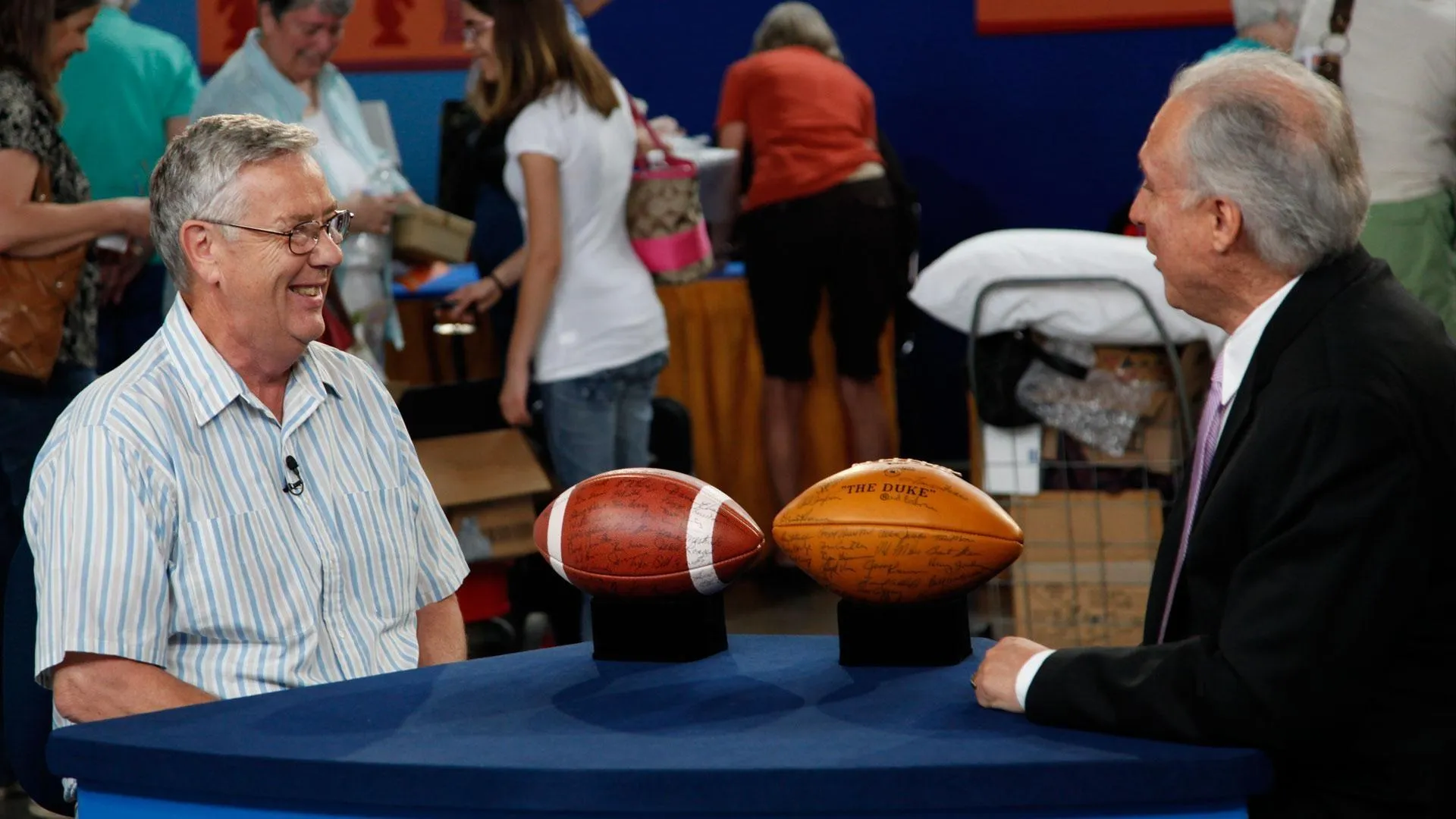GUEST: I bought them in 1999, within about a month of each other, from a dealer, and he had rather lavish descriptions of each of them. But I just thought they were fascinating, and I really liked them, so I bid and I won the auctions. The printouts that I made off the auction site said that the fly whisk was probably Kongo. He said it was ivory, and he didn't describe the hair on the bottom, but I think it's elephant hair. The center figure is a Fang... I think it's pronounced "bieri" box, in which they kept cranial caps, and that is a guardian figure, and they brought the cranial caps out at rituals and special times, and in the meantime, they kept it in a hut and the figure guarded the ancestors' bones. The small mask I know nothing about. He said it was Bakuba. He thought it was a child's initiation mask, but I do know that small masks were worn on foreheads and on shoulders, so it's not necessarily a child's mask just because it's small.
APPRAISER: Was this on the Internet?
GUEST: Yes, this was on the Internet.
APPRAISER: And so did he give you guarantees, or how did that work?
GUEST: No, he did not give me any guarantees.
APPRAISER: Okay, this first one is a Kongo-style... Now, the country that it's from is the Democratic Republic of the Congo, and that's spelled with a "C."
GUEST: Mm-hmm.
APPRAISER: The tribal name is spelled with a "K"-- K-o-n-g-o. Now, the first thing that we do when we know what an object is, we look for the appropriate wear patterns. This is a fly whisk. It's a status symbol. It's a symbol of authority. And so what we'd expect to see is a great deal of wear where the hand would have touched this.
GUEST: Mm-hmm.
APPRAISER: Now, it's somewhat troublesome that the patination seems somewhat even on this and not really indicative of a great deal of wear. So this is definitely a reproduction, which is being made for sale, fly whisk. This piece is probably somewhere around mid-20th century. Now, this piece over here, these Fang features are very exaggerated. This shape of the head is really troublesome.
GUEST: Mm-hmm.
APPRAISER: And so in my judgment, this piece was also made for sale.
GUEST: Okay.
APPRAISER: Now, this piece here you thought is a mask. I think it's the top to a Kuba box.
GUEST: Really?
APPRAISER: Because when you look at the wear along here, down on the nose, the side here, the Kuba don't have any masks like this.
GUEST: Really?
APPRAISER: But they do have a tradition of box making...
GUEST: Yes, and I have a few boxes. And they have lids. It never occurred to me.
APPRAISER: Now, stylistically it's really weird, it's really aberrant. I think this is a little bit earlier. I think this is the first half of the 20th century, maybe into the '20s or the '30s.
GUEST: Yeah.
APPRAISER: Now, the total that you have on this piece. What did you pay for this?
GUEST: $1,200, about.
APPRAISER: Twelve hundred.
GUEST: Mm-hmm, and $2,800 for that.
APPRAISER: Twenty-eight hundred.
GUEST: And $500...
APPRAISER: And $500.
GUEST: $500 for that.
APPRAISER: So our total is...
GUEST: $4,500, about.
APPRAISER: $4,500. Unfortunately, the total value of these pieces is going to be more in the $500 to $600 range.
GUEST: Wow.
APPRAISER: You'd expect on the Internet or in a retail shop, this piece would be somewhere around $100, $150. A piece like this is going to be in the $200 to $300 range.
GUEST: Okay.
APPRAISER: This piece over here as an authentic Kuba box lid without the box...
GUEST: (chuckles): Right.
APPRAISER: For a retail price, you're still looking at about $150. If they were all authentic, easily the group could be in the $50,000 to $60,000 range.











